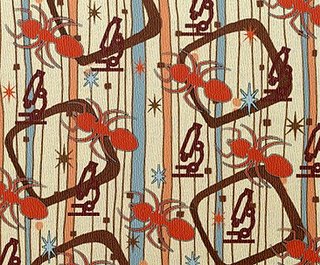
Amy's lovely pumpkin carving -- Gigantiops destructor. Happy Halloween!
In which I will be keeping track (for my own benefit) of my daily progress in the identification of the ant fauna of Tiputini Biodiversity Station in Ecuador, the analysis of that data, and the pursuit of my PhD. And (for the benefit of everyone else) I hope to provide helpful information on ants, taxonomy, database management, identification, and other assorted endeavors. Cheers

"There are two related but different roots from Greek that have entered the language of ant taxonomy, namely "myrm-" "myrmec-". The name Myrmica and its derivative Myrmicinae, rather confusingly, are based on the first root plus the suffix "-ic", so people make the error in spelling the subfamily Myrmicinae quite often."


"...the stuff I labeled lutzi could be called cf. lutzi. I've only seen one collection of lutzi, the types from Sao Paulo. So I don't know what variation is like. But your specimens are almost exactly in between lutzi and auropunctata. The workers are nearly identical to auropunctata except with petiole shape of lutzi. The queen is bigger than auropunctata, but the shape of the head and frontal carinae are like auropunctata instead of lutzi. I bet it is an undescribed species."
"That “lutzi” queen is kind of intermediate between the type of lutzi and queens of auropunctata, so it will be interesting to see if you can sort queens into two piles, lutzi vs auropunctata. They may be really hard to tell apart. The queen you sent looks just like an auropunctata queen, just bigger than any I have seen. So they may just sort out by size, or there may not be any differences!"
 Apparently there has been an oil spill on the Rio Tiputini. I am unclear where exactly this is in relation to the station, but it is certainly bad news for the wildlife and ecology of the area. Link to original post (In Spanish): Orellana: derrame de petroleo en el rio Tiputini por parte de Petroecuador.
Apparently there has been an oil spill on the Rio Tiputini. I am unclear where exactly this is in relation to the station, but it is certainly bad news for the wildlife and ecology of the area. Link to original post (In Spanish): Orellana: derrame de petroleo en el rio Tiputini por parte de Petroecuador.
 Get your Charles Darwin fix here. "This site currently contains more than 50,000 searchable text pages and 40,000 images of both publications and handwritten manuscripts. There is also the most comprehensive Darwin bibliography ever published and the largest manuscript catalogue ever assembled. More than 150 ancillary texts are also included, ranging from secondary reference works to contemporary reviews, obituaries, published descriptions of Darwin's Beagle specimens and important related works for understanding Darwin's context."
Get your Charles Darwin fix here. "This site currently contains more than 50,000 searchable text pages and 40,000 images of both publications and handwritten manuscripts. There is also the most comprehensive Darwin bibliography ever published and the largest manuscript catalogue ever assembled. More than 150 ancillary texts are also included, ranging from secondary reference works to contemporary reviews, obituaries, published descriptions of Darwin's Beagle specimens and important related works for understanding Darwin's context.". . . I have scarcely met anyone who seems to wish to possess any of my specimens. . . . I see it is quite unreasonable to hope for a minute, that any man will undertake the examination of a whole order.—It is clear the collectors so much outnumber the real naturalists, that the latter have no time to spare.—I do not even find that the collections care for receiving the unnamed specimens.—The Zoological Museum [of the Zoological Society] is nearly full & upward of a thousand specimens remain unmounted. I daresay the British Museum would receive them but I cannot feel, from all that I hear, any great respect even for the present state of that establishment.I'm not sure if it is gratifying or depressing that so little has changed since then.
 The October 19th edition of Nature includes an impressive article titled "Reconstructing the early evoluition of Fungi using a six-gene phyogeny." I don't know much about fungus or frankly about reconstructing phylogenies, but I was impressed with this paper for the massive number of authors who apparently came together to create this new phylogeny. From the News and Views commentary on the article:
The October 19th edition of Nature includes an impressive article titled "Reconstructing the early evoluition of Fungi using a six-gene phyogeny." I don't know much about fungus or frankly about reconstructing phylogenies, but I was impressed with this paper for the massive number of authors who apparently came together to create this new phylogeny. From the News and Views commentary on the article:"The cooperation among researchers that has resulted in the new paper is almost as impressive as the product itself. Systematics can be a fairly balkanized field, with specialists defending their turf or their analytical methods against perceived competitors. However, cooperation has always been common among fungal researchers because the field is woefully underpopulated. The James group included both traditional, morphologically based systematists, who contributed a wealth of knowledge on the organisms, and molecular systematists, who supplied the methodological and analytical techniques. Even Ralph Emerson, who died in 1979, made a notable posthumous contribution: it was his culture of Rozella, isolated in 1947, that made the sequence acquisition for this critical branch possible. This fusion of talents was essential to ensure that the broadest possible sample of fungi was selected, and that the data were collected and analysed rigorously. The results represent a proud moment for the field, and will be in the textbooks for some time to come." -- Tom Burns

 From the British Library's Images Online database:
From the British Library's Images Online database:"Abu'l-Mihjan leading his army to fight the giant ants. A miniature painting from a seventeenth century manuscript of Khavarnama, a poem on the legendary warlike deeds of 'Ali."

"The Laboratory of Entomology of Wageningen University has won the Academic Year Prize in a competition between the Dutch universities. This Prize was awarded on the basis of the research quality and the plan to convey this to the general public. The Wageningen team’s plan that was honored with the Academic Year Prize 2005/2006 was to transform Wageningen into the City of Insects.
Life on earth is dominated by insects: 80% of all animal species walk on six legs and the biomass of ants alone equals the biomass of humans. Insects are essential components of ecosystems and knowledge of insects is exploited in hospitals (maggot therapy to heal wounds), in criminal investigations (to help solve murder cases), in crop protection (to combat insect pests), in pollination, in nutrition (insects are a delicacy to 80% of the world’s population), in robotics (small brains allow fantastic performance) etc. Moreover, insects feature in art (e.g. Van Gogh, Dali and many others), in movies, in novels etc.
During the festival Wageningen – City of Insects (www.cityofinsects.nl) there will be more than 50 activities, many of them in Dutch, some in English and others without any language."
